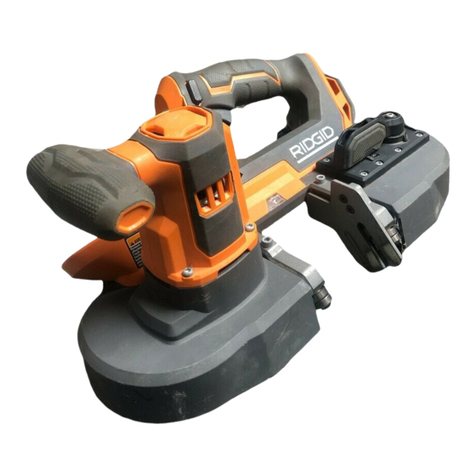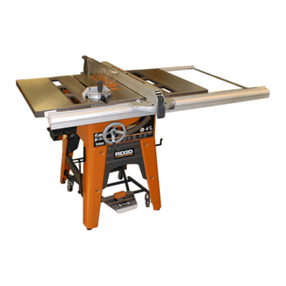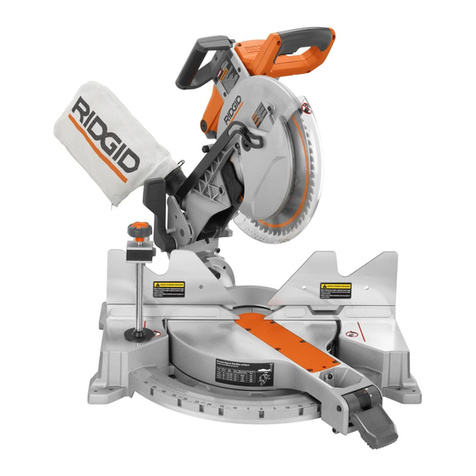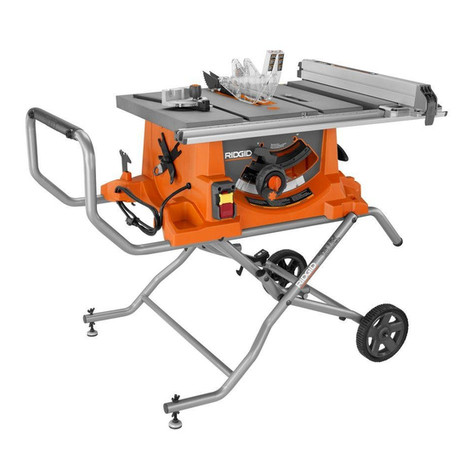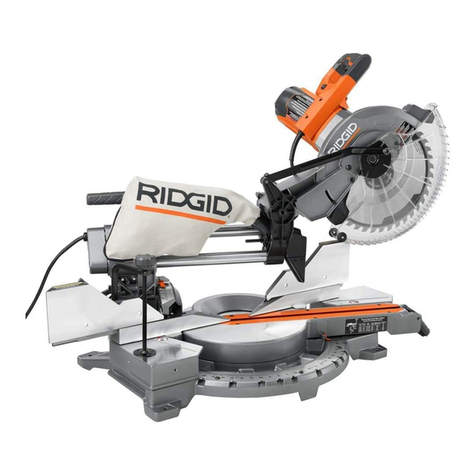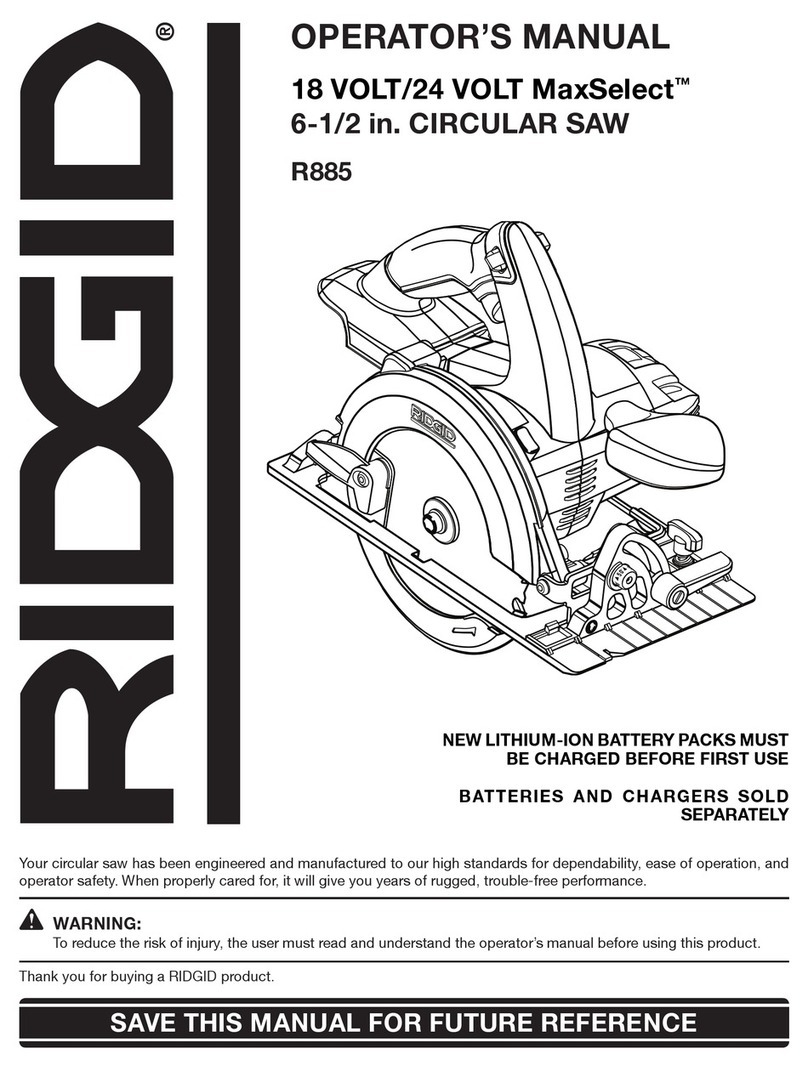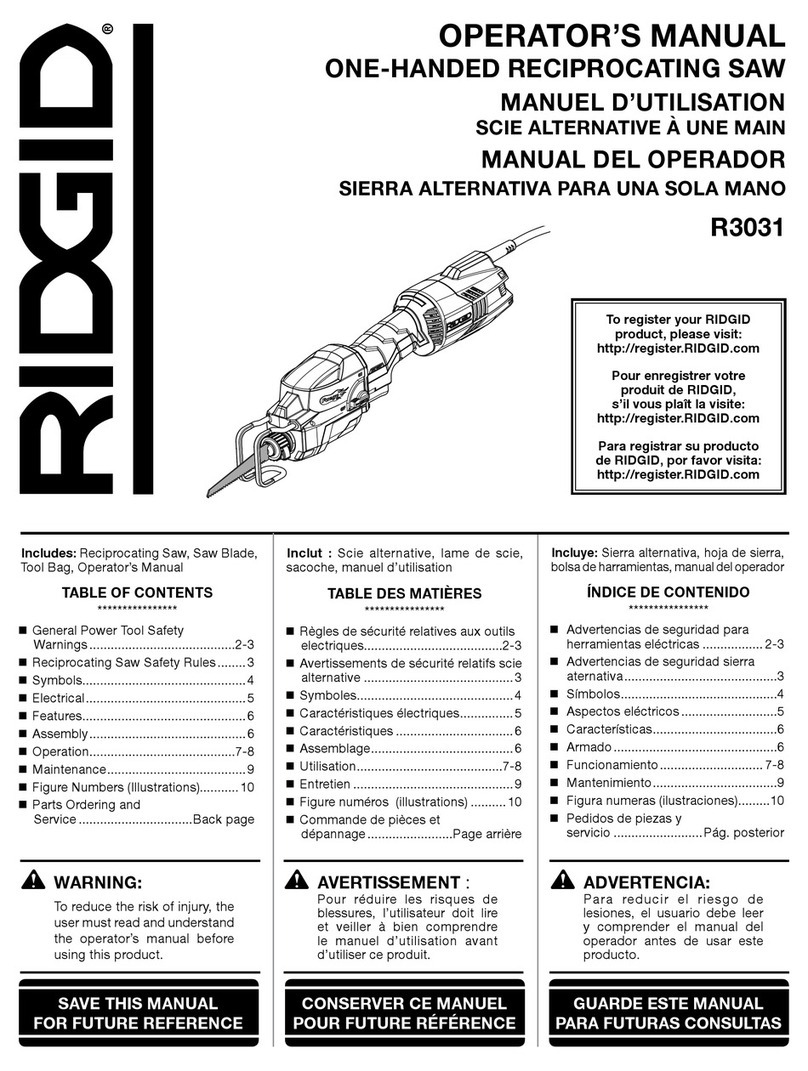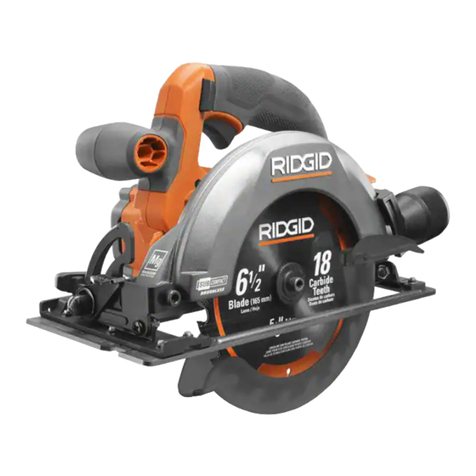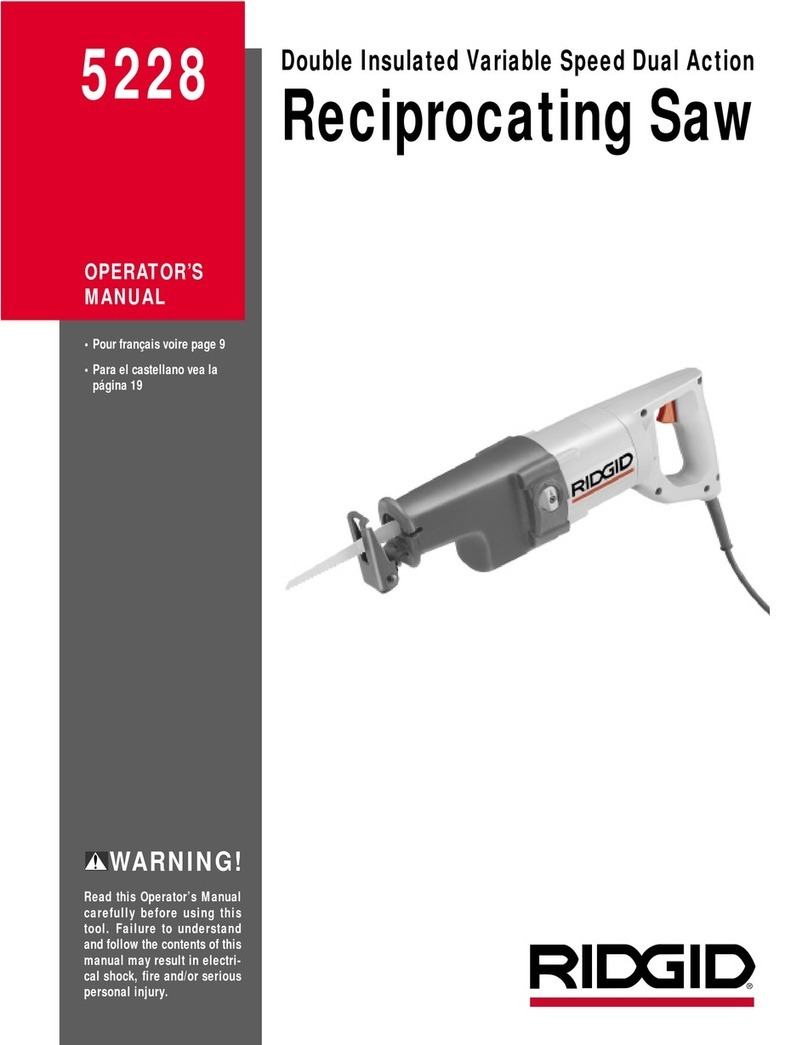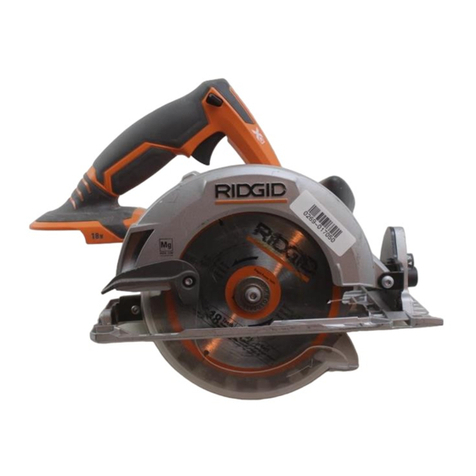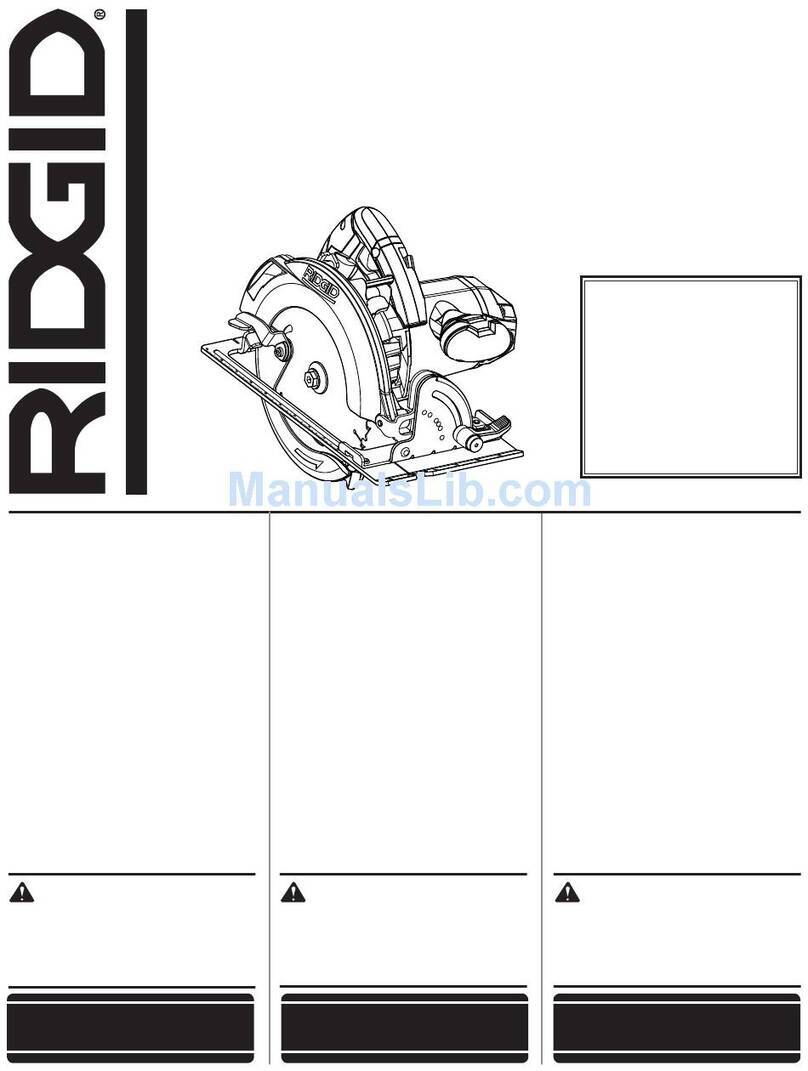
TABLE OF CONTENTS
FUNCTI ONAL DESCRI PTI ON
FUNCTI ONAL DESCRI PTI ON...............................................2
SPECI FI CATIONS ................................................................2
FEATURES.......................................................................... 3
I MPORTANT SAFETY I NSTRUCTI ONS.................................4
SAFETY-SYMBOLS-DEFI NI TI ONS...................................... 4
GENERAL POWER TOOL SAFETY WARNI NGS.................... 5
TABLE SAW SAFETY RULES.................................................6
TERMI NOLOGY ...................................................................6
TABLE SAW SPECI FIC SAFETY RULES...................................6
SAW BLADE GUARD, ANTI-KICKBACK PAWLS AND
RIVING KNI FE.....................................................................8
KI CKBACKS.........................................................................9
PROPOSI TI ON 65 WARNI NG ............................................ 9
POWER CONNECTI ONS ................................................... 10
POWER SOURCE............................................................... 10
EXTENSI ON CORDS........................................................... 10
UNPACKI NG..................................................................... 10
PACKAGE CONTENTS DESCRIPTI ON...................................11
CONTENTS OF HARDWARE BAGS.......................................12
ASSEMBLY.........................................................13
TOOLS NEEDED FOR ASSEMBLY OF ADJUSTMENTS.............13
UNPACKING...................................................................... 13
ASSEMBLING THE STAND .................................... ..............15
HEI GHT ADJUSTMENT KNOB I NSTALLATION ......................16
FENCE ADJUSTMENT KNOB I NSTALLATI ON .. ......................16
INSTALLING THE BLADE....................................................17
THROAT PLATE .................................................................18
ANTI -KI CKBACKS PAWLS ................................................19
BLADE GUARD ................................................................19
INSTALLING THE FENCE..................................... ...............20
REMOVING THE FENCE .....................................................20
ON-BOARD STORAGE.............................................. ..........21
MAKI NG ADJUSTMENTS .................................................. 22
LEVELING THE THROAT PLATE ..........................................22
ADJUSTI NG BLADE PARALLEL TO MITER GAUGE GROOVE
(HEEL) .............................................................................22
SQUARI NG THE BLADE VERTI CALLY TO THE TABLE ............25
ADJUSTI NG THE BEVEL STOPS ..........................................24
ADJUSTI NG THE BLADE HEI GHT........................................25
CHANGING THE BEVEL................................................. .....25
SPECI FI CATI ONS
The RI DGI D®# R4550 10 inch Portable Contractor Table Saw is
designed for portability and high quality performance. It includes:
basic machine, sturdy tubular steel stand, integral 2 1/ 2 inch dust
port, a fence system, T-slot miter gauge, 15 amp motor, on/o
switch, cast aluminum table, extension wing, see-through blade
guard with anti-kickback pawls, and 10 inch carbide blade.
NOTI CE: The manual cover illustrates the current production
model. All other illustrations contained in the manual are
representative only and may not be exact depictions of the actual
labeling or accessories included. They are intended for illustrative
purposes only.
Max depth of cut at 90°: 3 ½ inch
Max depth of cut at 45°: 2 ½ inch
Max rip to right of blade: 32.5 inch
Max rip to left of blade: 22 inch
MOTOR SPECI FI CATI ONS:
Amps 15 inch
Voltage 120 volts
Blade Diameter 10 inch
No Load RPM 5,000
USING THE MI TER GAUGE.................................................25
ADJUSTI NG THE RAI L SYSTEM ..........................................25
USING COLOR CODED SCALES...........................................26
ENGAGING THE FLIP DOWN FENCE ...................................27
RIVING KNI FE HEI GHT SETTI NGS......................................28
RI VI NG KNI FE POSI TI ON AND ALI GNMENT.................28
PARALLEL ALI GNMENT ......................................................29
HORI ZONTAL ALIGNMENT .................................................29
VERTI CAL ALI GNMENT ......................................................29
OPERATI ON......................................................................30
DUST COLLECTION ...........................................................30
TURNI NG THE SAW ON AND OFF.......................................31
TRANSPORTING THE SAW .................................................31
MAKI NG CUTS...................................................................32
RIP CUTS .........................................................................33
BEVEL RIPPING.................................................................33
CROSSCUTTI NG................................................................34
BEVEL CROSSCUTTI NG......................................................34
MITER CUTS.....................................................................34
COMPOUND MI TER CUTS ..................................................35
LARGE PANEL CUTS ..........................................................35
NON-THROUGH CUTS........................................................35
MAKI NG A NON-THROUGH CUT .........................................35
CUTTI NG AI DS AND ACCESSORI ES..................................36
PUSH STICK .....................................................................36
AUXILIARY MITER GAUGE FACING.....................................36
AUXILIARY FENCE (FLIP DOWN) ........................................37
PUSH BLOCK ....................................................................37
GROOVING AND RABBETI NG.............................................37
FEATHERBOARD ...............................................................38
CUT OFF GAUGE ...............................................................38
JIGS.................................................................................38
MAI NTENANCE.......................................................39
KEEP MACHINE CLEAN ......................................................39
MAINTENANCE REMINDERS...............................................39
ACCESSORI ES..................................................40
TROUBLESHOOTI NG.............................................40
PARTS, SERVI CE OR WARRANTY ASSI STANCE............... 41
This tool can ONLY be used w ith woodw orking saw blades.
2
